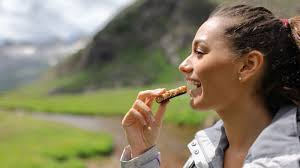Smart Eating on the Go: How Travelers Can Stay Healthy with Better Nutrition

Why Nutrition Matters When You’re Traveling
Hitting the road—whether for work, adventure, or simply a change of scenery—brings endless opportunities, but it also introduces unique physical pressures. Jet lag, disrupted sleep, unfamiliar environments, and tight schedules can quickly drain your energy and mood. In these moments, nutrition plays a vital yet subtle role. Choosing the right foods can radically impact how energized, focused, and resilient you feel during your journey, while poor dietary decisions can quickly snowball into headaches, fatigue, or stomach issues.
It’s easy to overlook nutrition when traveling, especially when convenience foods and new dining experiences fight for your attention. However, integrating nutritious habits on the go—such as grabbing a banana instead of a pastry or packing nuts instead of sweets—goes a long way toward keeping your mental clarity and immune function in top shape. By putting nutrition on your travel checklist, you position yourself to stay healthy, positive, and fully engaged with every new experience.
Planning Ahead: Smart Strategies for Healthy Eating
The best defense against nutritional pitfalls while traveling is planning. Taking time before your trip to pack wholesome, portable snacks—think raw almonds, protein bars, dried fruit, or baby carrots—means you’ll always have fuel on hand when hunger hits unexpectedly. If you have the option, prepping sandwiches or grain bowls for flights or road trips can provide a more balanced meal than anything you’ll find at a gas station or on an airplane. Researching the area you’ll be visiting, from restaurants to local markets, ensures you know where to seek out healthy options upon arrival. Passionate traveler and dedicated foodie Claudette Schwartz emphasizes that being proactive with your food choices while traveling helps maintain stable energy levels and supports overall well-being.
Hydration is another area where travelers commonly fall short. Dehydration is linked to headaches, fatigue, and impaired concentration—none of which make for a happy travel experience. Bringing a reusable water bottle and filling it regularly, especially in dry airplane cabins or sunny destinations, can help fend off those unwanted symptoms.
Reading Food Labels and Making Informed Choices
One of the best moves any traveler can make is to quickly read food labels before buying snacks or meals, especially in unfamiliar destinations. Understanding what goes into your food lets you avoid unnecessary sugars, saturated fats, and sodium, which are often hidden in seemingly healthy travel foods. Knowing a few key nutrition phrases in the local language—like “contains milk,” “gluten-free,” or “no sugar added”—can help you scan labels abroad and minimize the risk of dietary issues.
In many countries, food packaging may look different, and local regulations could affect what is disclosed. Some use clear “traffic light” systems to indicate high or low levels of fat and sugar, while others may prioritize allergen visibility. Scanning ingredients for unrecognizable additives or processed oils helps you make choices that align with your wellness goals, without spending hours researching.
Boosting Immunity with Nutrient-Rich Foods While Away
A traveler’s immune system is constantly working overtime. Shifts in climate, exposure to new bacteria, and a lack of sleep can all erode your body’s resilience. Prioritizing foods rich in immune-boosting nutrients like vitamin C (citrus, strawberries, spinach), zinc (pumpkin seeds, chickpeas, shellfish), and vitamin D (eggs, oily fish, fortified milk) helps fortify your system against illness. According to Healthline’s guide on immune-boosting foods, incorporating these nutrients regularly can support your body’s natural defenses. Even small steps, such as choosing a salad for lunch or swapping a sugary snack for a piece of fruit, can help keep your energy stable and immune defenses strong.
Gut health is vital during travel. Integrating probiotics, found in yogurt, kimchi, or miso, and ample fiber from whole grains, beans, and raw vegetables, supports digestion and overall health. Proactively boosting gut flora can also help prevent digestive upsets that are common when the cuisine changes abruptly. For longer trips or when options are limited, a high-quality daily multivitamin may help fill any nutritional gaps.
Managing Gastrointestinal Issues and Jet Lag Through Nutrition
Digestive issues like constipation, diarrhea, or stomach cramps can quickly sour any trip. These symptoms often arise from a combination of unusual foods, dehydration, stress, and adjusting to new time zones. To minimize discomfort, opt for easily digestible foods if you feel unwell. Bananas, plain rice, applesauce, and toast (the BRAT diet) are classic options for calming a sensitive stomach. Maintaining consistent meal times, even when traveling across time zones, helps anchor your body’s internal clock, reducing the effects of jet lag.
Some foods, such as magnesium-rich leafy greens or a handful of nuts, can actually support circadian rhythms and physical adaptation. Incorporating probiotics is beneficial not just for digestion but also for replenishing good bacteria lost through outbreaks of traveler’s diarrhea or changes in diet. Staying hydrated, eating smaller meals, and avoiding excessive alcohol and caffeine also help you reset your system securely at your destination.
Cultural Considerations and Respectful Eating Abroad
Food is a window into culture, so celebrating local flavors is one of the best joys of travel. Still, honoring your health doesn’t have to mean missing out. With a bit of preparation, you can enjoy new cuisines in a way that aligns with your wellness goals. Learning a few basic food-related terms in the native language allows you to kindly communicate allergies, intolerance, or dietary choices without confusion or offense. Many cultures appreciate thoughtful curiosity about their cuisine, and most hosts are eager to help guests sample dishes safely.
Enjoy special treats or bigger meals, but consider balancing indulgence with a lighter breakfast or more fruits and vegetables throughout the day. Mindful choices allow you to truly savor those must-try foods without feeling guilty or experiencing unpleasant aftereffects. The Centers for Disease Control and Prevention offers a comprehensive guide to safe eating tips for international travelers, covering best practices for food hygiene, hydration, and adapting respectfully to different food traditions as you travel the globe.
Essential Nutrition Tips for Different Types of Travelers
- Business travelers: Take advantage of hotel amenities like in-room coffee makers, fruit bowls, and yogurt to start your day off right. Keeping a stash of shelf-stable, nutrient-dense snacks in your bag helps maintain steady energy through back-to-back meetings.
- Adventure travelers: Prioritize snacks that are high in calories and nutrients, such as nut butter packets, jerky, or trail mix, to sustain long hikes or active days. Hydration pouches and electrolyte powder are excellent for high-intensity adventures or hot climates.
- Families: Pack kid-friendly snacks and prepare to research allergy-friendly restaurants in advance. Having a list of backup meal options can minimize stress and keep everyone happy.
Use this quick on-the-go nutrition checklist for smoother trips:
- Pack portable snacks (nuts, fruit, whole-grain crackers)
- Carry a reusable water bottle for easy refilling
- Research healthy dining options near your destination
- Mix local foods with your usual diet to maintain balance
- Always pay attention to personal food safety and hygiene
Wrapping Up
Every journey can be more satisfying and memorable when you feel well-nourished and energetic. Far from limiting the travel experience, practicing healthy nutrition turns every meal into a chance to fuel, recover, and engage fully with the world around you. With a mix of planning, flexibility, and curiosity, healthy eating becomes a seamless part of any adventure, no matter where the road leads.





